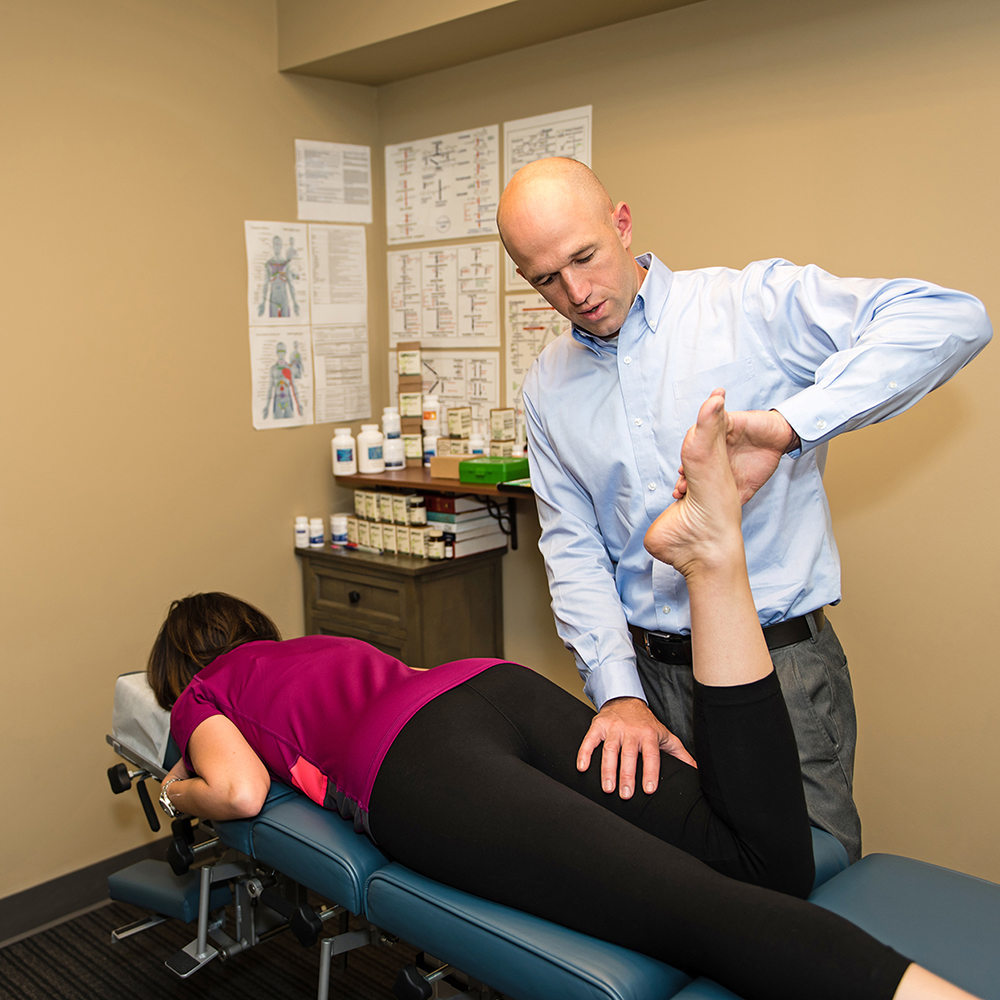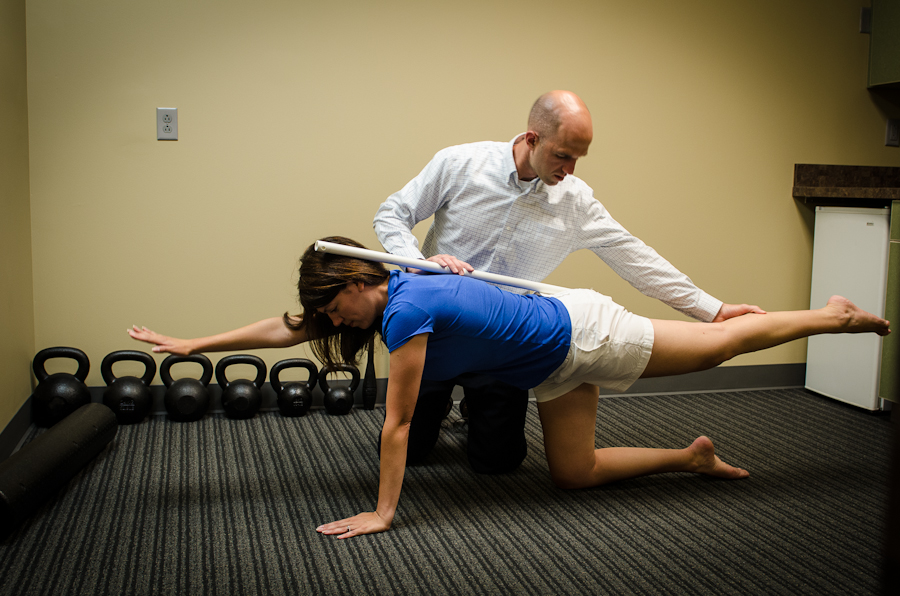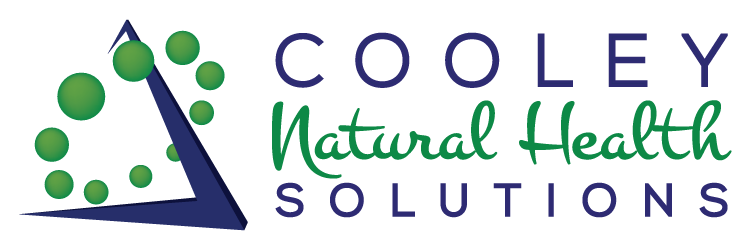The human body has amazing ability to self-heal, however, when patients are dealing with chronic health problems this means that they are stuck in a pattern that they cannot break. A patient may be stuck in a pattern of chronic injury, poor digestion, or immune stress, or a combination of all three.
Muscle testing is best used as a tool to identify patterns of neurological activity. Specific neurological patterns will create specific muscle imbalances. Since, the nervous system is representative of all organ systems then muscle testing can be a tool to identify various patterns of dysfunction throughout the body.
Can you find the Dysfunctional Pattern
An essential aspect of any diagnostic process is “Can you find something wrong?” One of the biggest advantages of muscle testing is that it is not difficult to find patterns of muscle dysfunction, especially on a new patient. Therefore, this treatment can act as a great supplement to traditional blood work and traditional medical approaches. It is very common for patients to have laundry list of complaints, however, the blood work and medical imaging is completely normal.

Since it can be relatively easy to find a dysfunctional muscle pattern on a patient, it is very crucial for the skilled practitioner to be able to decipher the difference between compensatory muscle imbalances versus key muscle imbalances.
Treatments to Break the Pattern
Every practitioner is trying to break patterns whether they realize it or not. Your general practitioner may give you anti-inflammatories to break a pattern of inflammation, your massage therapist may try to loosen a tight muscle to break a cycle of muscle over use, or a physical therapist may use exercise.
In my treatment approach there are essentially four ways that we try to break the chronic neurological pattern.
Four Main Treatment Interventions
Manual Therapy – there are numerous manual therapy techniques out there and they all have value. I would include any massage/myofascial technique, chiropractic manipulation, acupuncture, and taping in this category. The key point to consider is that if manual therapies need to be applied to the same areas over and over again then both the patient and the provider need to realize that there is something missing. If a muscle is always tight, than you must realize that there is a neurological signal causing the tightness and more than likely something needs to be addressed using one of the other treatment interventions listed below.

Exercise/Movement Therapy – most of the exercises that are prescribed are focused on core strength and breathing mechanics because these exercises can at least temporarily correct most muscle imbalances. Since, breathing is the dominant movement pattern of our neurology, (we breathe 23,000 times per day) it makes since that in order to break a chronic pattern, we must address our breathing first.

Natural Medicine Therapies (Vitamins/Minerals/Herbal Remedies) – in an ideal world nutritional supplementation would not be required, however, it is often a crucial part of the treatment process. It’s possible for a patient to make enough lifestyle changes that they will not need nutritional supplementation, however, most people require some support to speed up the recovery process.
In my practice, I prioritize the use of whole-food or single herb supplements. Therefore, if someone requires a B-complex I would rather give them a beef liver supplement rather than a synthetic b-complex or if someone requires an adrenal stimulant I would rather give them a high dose of a single herb rather than a combination product that has small doses of many different herbs.
I will be the first to admit that I often rely too heavily on nutritional supplements to break the patient’s muscle pattern. It is too easy for both the provider and the patient to fall into the trap of taking a pill rather than making some real lifestyle changes. In the future, I know that I need to hammer home lifestyle changes to patients in order to truly create lasting changes.
Lifestyle Changes – this is often the most important and most difficult aspect of the treatment process. They are four main categories for a patient to make real impactful changes.
- Nutritional – our current environment does make it difficult to truly eat healthy, therefore it often requires real effort to improve your diet. In order to simplify this process, if patients concentrated on elimination of all processed foods and follow intermittent fasting principles, then there nutrition will drastically improve.
- Exercise/Movement – the exercises discussed above are more of a way to self treat and balance the body’s neurology. However, patients still need to walk, lift heavy things, play, and move frequently in order to maximize their health. Dosage is the most difficult of the exercise process. Many patients exercise too little or do not exercise enough. Figuring out the proper exercise can be aided through the treatment process
- Sleep – prioritizing sleep will improve all aspects of health. Some people require specific interventions in order to get better quality sleep but for most people just prioritizing your sleep will make significant changes. That means going to bed at a consistent time, avoid late night food and alcohol intake, dark and cool room, avoiding stimulant TV programming at night
- Stress Management – too much stress is the underlying cause of every condition. Stress is an easy problem to blame and a hard problem to correct. For the extremely stressed out patient, meditation should be a requirement, in addition to an emphasis on proper diet, exercise and sleep
Conclusion
This is the general thought process throughout my treatment approach.
Can we find a problem?
Can we fix the problem?
Can we prevent the problem from coming back?
This article serves as a brief over view of how I think of patient complaints and how we can utilize muscle testing principles to guide the treatment.
For more information, feel free to contact Dr. Cooley at 716-608-3775 or [email protected]
